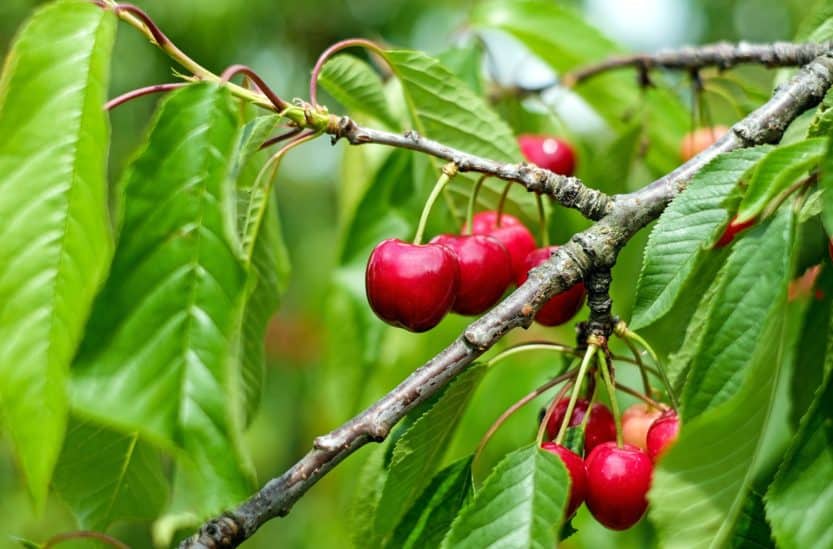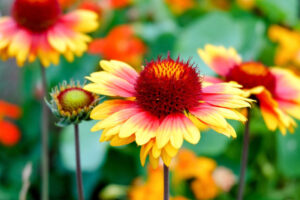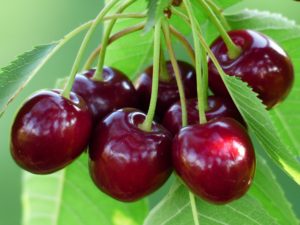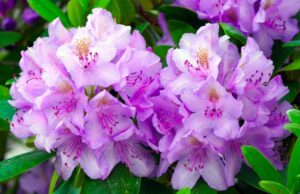How to Grow Cherries at Home: Cherry trees are a perfect fit for a gardener who wants a fruit tree that will produce a great tasting crop along with adding ornamental value to their landscape. Cherry trees will put on a wonderful display in the early spring when they are covered in beautiful white blossoms.
Along with the trees’ ornamental properties, they will also produce delicious fruit for years in your garden. In addition, cherries are one of the few fruits that contain melatonin, which is a hormone that is well known to help regulate the sleep cycle.
Buy Cherry Trees Online
Types of Cherries Trees
Cherry trees mainly come in two main varieties: sweet and tart. Sweet cherries tend to be the most popular, and tart cherries provide some added health benefits. Cherries are also a good source of vitamin C, with the sour cherries possessing a higher concentration of this essential nutrient.
Another main difference between sweet and tart cherries is their susceptibility to disease and pests. Tart cherries tend to be more resistant to disease and loss of fruit to birds, whereas sweet cherries will require more care and protection throughout the season.
Standard Cherry Tree vs Dwarf Cherry Tree
When selecting a variety of cherry tree to grow in your garden, you also have to consider the size of the growing area you are working with. A standard cherry tree reaches a mature height of about 10 feet (3 m), while dwarf cherry trees can stay as short as 6 feet (1.85 m) tall.
If the thought of having more flavors of cherries in your garden sounds appealing, dwarf cultivars will enable you to fit more plants into a smaller area. Dwarf cherry trees are usually available in well-known varieties, which have been grafted onto a dwarfing rootstock to provide the best of both worlds.
Where Can I Buy Cherry Trees
Cherry trees can be purchased from Nature Hill Nursery or Amazon.com , as a grafted sapling, this is important since trees started from cherry seeds do not produce plants that remain true to their parents; and it’s usually not advisable to start them from seed, unless you have enough space to try out a new untested variety.
How to Grow Cherries at Home
Planting Cherry Trees
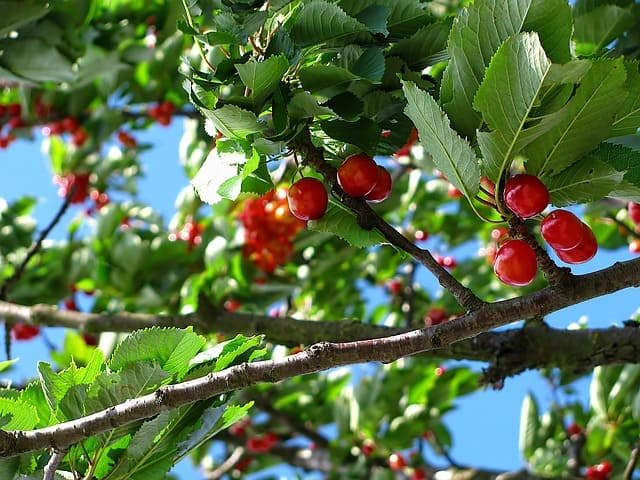
Where Do Cherry Trees Grow Best?
Find a site to plant your cherry tree that has full, unobstructed sun exposure all day long. Another consideration is to not place your cherry tree in a low spot in your landscape, especially one where late frost pockets tend to form. A late frost, after your cherry tree has started to bloom, can significantly reduce your overall harvest for that season.
Cherry Tree Soil Requirements
Cherry trees also need soil with good drainage that is not prone to the accumulation of standing water. Never plant your cherry tree where tomatoes, melons, strawberries, or any other plants that are known to harbor Verticillium Wilt, have grown previously because cherry trees are very susceptible to this disease.

When preparing your soil, add some compost and any soil amendments (Buy Online) that might be needed, based on the condition of the soil in your area. Be sure to loosen the soil to a depth twice as deep as the roots of your cherry sapling, so the plant can get off to a good start and not become root bound.
Cherry Tree Planting Depth
Once the soil has been prepared, place the plant into the hole, while making sure not to plant it too deeply. Be sure that the graft point is at least 2 inches (5cm) above the soil line and that the cherry tree is planted as straight as possible. If it is tilting or seems a little unstable, a support might be necessary for its first year.
Cherry Tree Planting Spacing
When planting multiple trees always try to situate them in close proximity to each other so your trees will get pollinated. You should space dwarf trees 12 feet (4 m) apart and standard varieties up to 24 feet (8 m) apart.
Cherry Tree Water Requirements
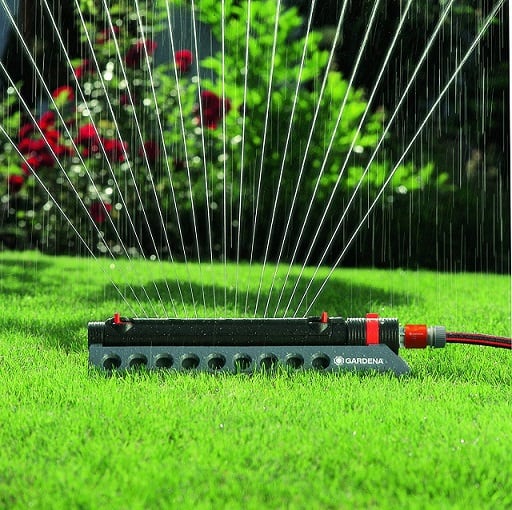
After you plant your trees, be sure to water them in thoroughly, as this will help the roots make firm contact with the soil by driving out any air pockets. Continue to lightly water the tree twice a week, taking care not to over water, until the tree is established, and thereafter, moderate the amount of watering since natural rainfall should suffice.
How to Grow Cherries at Home
Caring for Cherry Trees
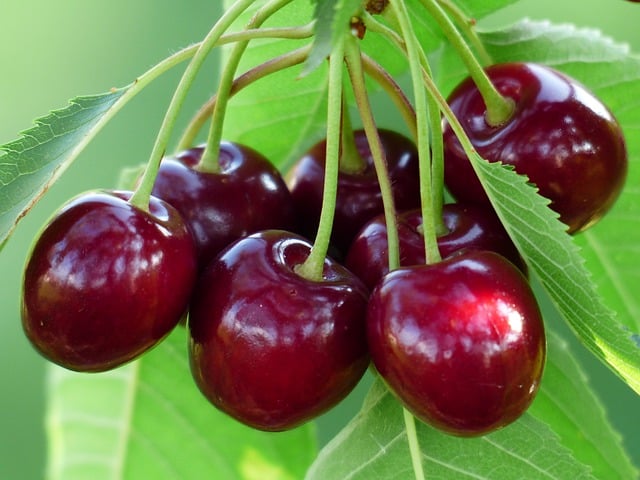
How Long Does it Take Cherry Trees to Produce Fruit?
Your cherry trees will need about 3 to 5 years to produce their first harvest; however, during this time, you will still have some work to do. Every spring, you should apply a fertilizer formulated for fruit trees, around the base of your plant.
Pruning Cherry Trees

As with most fruit trees, yearly pruning will enhance the future harvest. While the tree is still maturing, you should remove any branches using pruning shears (Buy Online) that have crossed into the canopy, as this will provide good air circulation, and help the plant dedicate more energy to branches that will be better able to bear fruit.
Cherry Tree Insect Problems
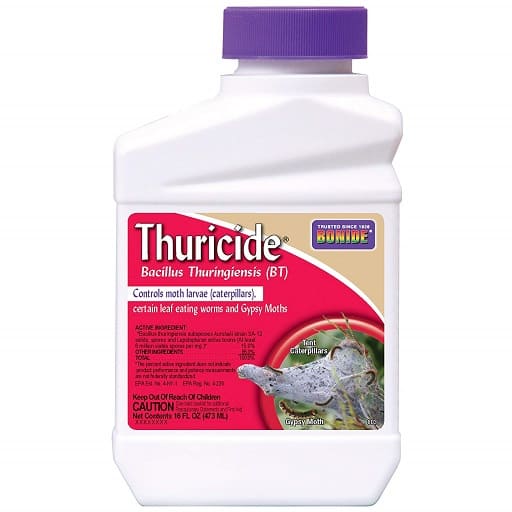
Cherry trees are vulnerable to insect infestations, so be on the lookout for caterpillars, aphids and other insects that will defoliate your trees. If the infestation is small, you can hand spray the insects off with water, or remove the infected branch. If you happen to find a large scale infestation, especially of boring insects, that’s causing significant damage to the tree, then a strong pesticide (Buy Online) might be in order.
When your first cherries start to form, you will have to keep a lookout for the cherry fruit fly. This insect can make your cherries unusable, so swift action should be taken once they are noticed. Another issue you will probably encounter is the loss of cherries to birds. If this becomes a problem, you can cover the whole tree in a net, which should be alot easier with dwarf varieties.
When are Cherries Ripe
If you have made it to the end of the season with a full crop of cherries, you can begin harvesting them. Make sure the cherries have reached their peak color and they should be firm when lightly squeezed. Sour cherries will tend to slip off the stem when they are ripe, while sweet cherries should be tasted first in order to tell if they have reached peak flavor.
Harvesting Cherries by Hand
When harvesting your cherries, be careful not to damage the wood spur that the cherry stem is attached to, because this growth point will yield cherries for many years to come.
Storing Cherries
Cherries can be stored fresh for a short period, or you can preserve your cherries by canning them, baking them into pies or making jams and juices, or you can freeze them for to preserve their flavor and nutrients for a prolonged period of time.


